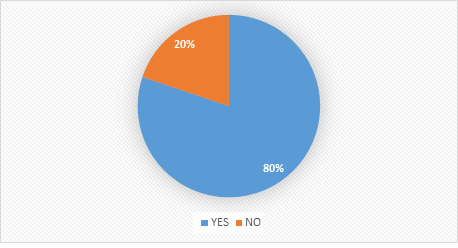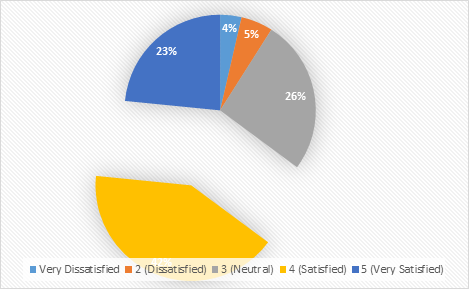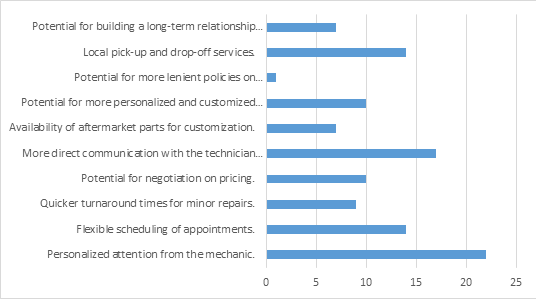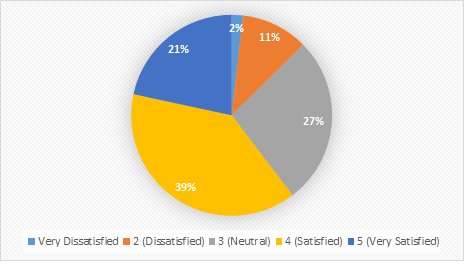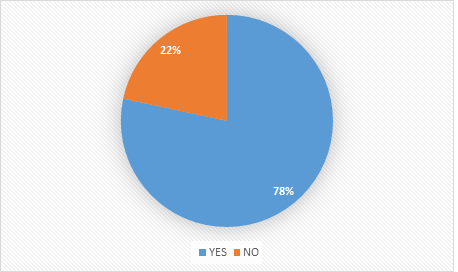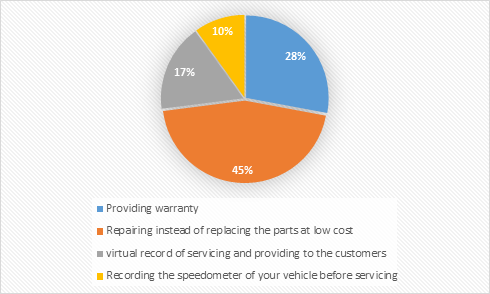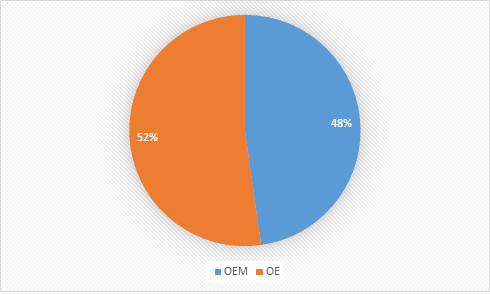“Comparative Analysis of Customer Satisfaction: Local Servicing Vs Showroom Servicing in the Automotive Industry” a Case Study on Malladhi Motors Service Centre, Guntur.
- Dr S Durga.
- Dr I Mohana Krishna.
- M Raja Pavan Kumar
- 251-263
- Jul 5, 2024
- Management
“Comparative Analysis of Customer Satisfaction: Local Servicing Vs Showroom Servicing in the Automotive Industry” A Case Study on Malladhi Motors Service Centre, Guntur.
1Dr S Durga., 2Dr I Mohana Krishna., 3M Raja Pavan Kumar, Assistant Professor,
1Sr. Asst. Professor, Vignan Foundation for Science, Technology & Research
2Assistant Professor, KL Business School, KLEF
3KL Business School, KLEF (Director, Malladhi Motors Service Centre, Guntur.)
DOI : https://doi.org/10.51244/IJRSI.2024.1106021
Received: 23 May 2024; Accepted: 07 June 2024; Published: 05 July 2024
ABSTRACT
Cars and bikes are a complex mix of electrical and mechanical components prone to wear and tear, and the effects of natural elements, requiring regular servicing to ensure optimal performance. Moreover, if they meet with an accident, they might require repairs or replacements of parts. Either way, you might face a dilemma when it comes to choosing between a local garage or an authorised service centre for the job. This study examines the factors influencing customer satisfaction in the automotive service industry Guntur, specifically comparing experiences between local garage Malladhi Motors service centre and authorized service centres. By analysing data from customer surveys, online reviews, this research identifies key dimensions affecting satisfaction, including service quality, price, convenience, warranty considerations, customer service, expertise, and feedback. The findings reveal nuanced differences between the two types of establishments, highlighting strengths and weaknesses in each category. While authorized service centres excel in providing brand-specific expertise and adhering to warranty requirements, local garages offer competitive pricing, personalized service, level of expertise, availability, additional services and flexibility.
Keywords: Local Garage, Authorised Service Centres, Services, Customer Satisfaction
INTRODUCTION
In the realm of automotive maintenance and repair, the debate over whether local servicing or showroom servicing provides a superior customer experience has garnered significant attention. This discourse stems from the diverse array of factors that influence customer satisfaction, ranging from service quality and pricing to convenience and warranty considerations. Local servicing, typically offered by independent garages or mechanics, often boasts personalized attention, competitive pricing, and flexibility in scheduling. Conversely, showroom servicing, provided by authorized service centres affiliated with vehicle manufacturers, emphasizes brand-specific expertise, adherence to warranty requirements, and access to genuine parts. Understanding the nuances of customer satisfaction within these distinct service models is imperative for both consumers seeking optimal service experiences and industry stakeholders aiming to enhance service delivery. This paper endeavours to conduct a comprehensive comparative analysis of customer satisfaction between local servicing and showroom servicing in the automotive industry, shedding light on the factors driving customer preferences and informing strategic decisions for service providers. Through a synthesis of empirical data, customer testimonials, and industry insights, this study aims to elucidate the strengths and limitations of each servicing approach, facilitating informed choices and fostering improvements in the automotive service sector.
RESEARCH OBJECTIVES
- To assess and compare the perceived service quality experienced by customers at local servicing (Malladhi Motors, Guntur) establishments and showroom servicing centres in the automotive industry, considering factors such as technical competence, efficiency, and professionalism.
- To examine the influence of convenience factors, including scheduling flexibility, turnaround time, and location proximity, on customer satisfaction levels between local servicing (Malladhi Motors, Guntur) and showroom servicing options in the automotive sector.
Sample and Data Collection
A structured questionnaire was developed to collect quantitative data on customer satisfaction levels, preferences, and experiences. It was administered online for 200 customers and received a sample of 111 respondents. The data so collected was analysed with the help of simple percentages and averages.
ANALYSIS AND DISCUSSION
- The data indicates a notable preference for local servicing among respondents, with 80.18% reporting utilization of such services for their automobile needs. This suggests a strong reliance on local garages or mechanics within the community. ( Annexures Table 1)
- The data reveals that cost is the most influential factor affecting respondents’ decisions when choosing between local servicing and showroom servicing, with 54.1% of respondents citing it as a primary consideration. This suggests that affordability plays a significant role in shaping consumer preferences within the automotive service industry. Quality of service follows closely behind, with 27.9% of respondents prioritizing it, indicating a substantial concern for receiving reliable and competent service regardless of the service provider’s type. Other factors such as convenience/location, trust in the service provider, warranty coverage, and miscellaneous reasons are comparatively less influential, collectively representing a smaller portion of respondents’ decision-making considerations. This highlights the dominant influence of cost and service quality in shaping consumer choices between local and showroom servicing options, emphasizing the importance of competitive pricing and service excellence in meeting customer needs and preferences. (Annexures Table 2)
- The data illustrates that many respondents’ express satisfaction with the cost-effectiveness of local servicing compared to showroom servicing. Specifically, 41.4% of respondents report being satisfied (rating 4) and 23.4% indicate being very satisfied (rating 5), collectively representing a substantial portion of the sample. Conversely, a smaller proportion of respondents express dissatisfaction, with 3.6% reporting being very dissatisfied (rating 1) and 5.4% indicating dissatisfaction (rating 2). Additionally, a notable portion of respondents (26.1%) remain neutral (rating 3) regarding the cost-effectiveness of local servicing versus showroom servicing. Overall, the data suggests a generally positive perception of the cost-effectiveness of local servicing, with a significant proportion of respondents finding it satisfactory or very satisfactory compared to showroom servicing, highlighting the perceived value and affordability offered by local service providers in the automotive industry. (Annexures Table 3)
- The data suggests a mixed perception regarding the quality of parts used in local servicing compared to showroom servicing among respondents. A significant portion of respondents express neutrality, with 33.3% rating both types of servicing as neutral (rating 3), indicating an absence of strong preference or dissatisfaction with either option. Similarly, another 33.3% of respondents report being satisfied (rating 4) with the quality of parts in both local and showroom servicing. On the other hand, dissatisfaction is also evident, albeit to a lesser extent, with 9% of respondents expressing dissatisfaction (rating 2) and 2.7% indicating being very dissatisfied (rating 1) with the quality of parts in both types of servicing. Additionally, 21.6% of respondents report being very satisfied (rating 5) with the quality of parts in either local or showroom servicing, indicating a notable level of contentment among a subset of respondents. Overall, the data reflects a relatively balanced perspective on the quality of parts used in both local and showroom servicing, with a substantial portion of respondents expressing satisfaction or neutrality, tempered by a minority reporting dissatisfaction. (Annexures Table 4)
- The data suggests that respondents hold generally positive perceptions regarding the level of expertise among technicians at local servicing centres. A significant proportion of respondents express satisfaction, with 43.2% rating their level of expertise as satisfied (rating 4) and 24.3% indicating being very satisfied (rating 5). Moreover, a sizable portion of respondents (26.1%) report neutrality (rating 3), suggesting an absence of strong opinions regarding the expertise of technicians at local servicing centres. Dissatisfaction is relatively minimal, with only 3.6% of respondents expressing dissatisfaction (rating 2) and 2.7% indicating being very dissatisfied (rating 1) with the level of expertise. Overall, the data reflects a predominantly positive perception of the expertise of technicians at local servicing centres, with a significant portion of respondents expressing satisfaction or neutrality, highlighting the confidence in the skills and capabilities of local service providers in delivering automotive maintenance and repair services. (Annexures Table 5)
- The data indicates that many respondents, comprising 53.2%, acknowledge warranty implications for opting for local servicing, while 46.8% report no such implications. This suggests a significant awareness among respondents regarding the potential impact of choosing local servicing on warranty coverage for their vehicles. The high percentage of respondents recognizing warranty implications underscores the importance of understanding warranty terms and conditions when selecting a servicing option. Conversely, the substantial portion of respondents reporting no warranty implications suggests that a significant number may either have vehicles out of warranty or perceive local servicing as compatible with warranty coverage. Overall, the data highlights the significance of warranty considerations in the decision-making process for automotive servicing, indicating a need for clear communication and transparency regarding warranty implications from both local service providers and vehicle manufacturers. (Annexures Table 6)
- The data illustrates a generally positive perception regarding the expertise of technicians at local servicing centres among respondents. While a small minority express dissatisfaction, with 0.9% indicating being very dissatisfied (rating 1) and 4.5% reporting dissatisfaction (rating 2), the majority of respondents express satisfaction with the level of expertise. Specifically, 45% rate the expertise of technicians as satisfied (rating 4), and 26.1% rate it as very satisfied (rating 5). Moreover, a notable portion of respondents (23.4%) report neutrality (rating 3), indicating an absence of strong opinions regarding the expertise of technicians at local servicing centres. Overall, the data reflects a predominantly positive perception of technician expertise, with a significant proportion of respondents expressing satisfaction or neutrality, suggesting confidence in the skills and capabilities of technicians at local service centres in delivering automotive maintenance and repair services. (Annexures Table 7)
- The data reveals a range of additional services and perks typically offered with local servicing compared to showroom servicing, reflecting the personalized and customer-centric approach of local service providers. Personalized attention from the mechanic emerges as the most commonly offered perk, with 19.8% of respondents acknowledging it. This is followed by flexible scheduling of appointments (12.6%) and quicker turnaround times for minor repairs (8.1%), emphasizing the convenience and efficiency associated with local servicing. Other notable perks include the potential for negotiation on pricing (9%), more direct communication with technicians (15.3%), and the availability of aftermarket parts for customization (6.3%), catering to individual preferences and needs. Additionally, the potential for more personalized and customized services (9%) and the opportunity to build long-term relationships with local service centres (6.3%) highlight the emphasis on customer loyalty and satisfaction in the local servicing sector. Overall, the data underscores the value proposition of local servicing, which goes beyond basic repairs to encompass personalized attention, flexibility, and tailored solutions tailored to individual customers. (Annexures Table 8)
- The data suggests a generally positive perception regarding the availability of specialized equipment for diagnostics and repairs in local servicing compared to showroom servicing among respondents. While a small percentage express dissatisfaction, with 1.8% indicating being very dissatisfied (rating 1) and 10.8% reporting dissatisfaction (rating 2), the majority of respondents express satisfaction with the availability of specialized equipment. Specifically, 38.7% rate the availability as satisfied (rating 4), and 21.6% rate it as very satisfied (rating 5). Moreover, a notable portion of respondents (27%) report neutrality (rating 3), indicating an absence of strong opinions regarding the availability of specialized equipment in local servicing centres. Overall, the data reflects a predominantly positive perception of the availability of specialized equipment, with a significant proportion of respondents expressing satisfaction or neutrality, suggesting confidence in the capabilities of local service providers to effectively diagnose and repair automotive issues. (Annexures Table 9)
- The data suggests a significant perception among respondents that there are notable differences in the communication and transparency of the repair process between local servicing and showroom servicing. A substantial majority, comprising 78.4% of respondents, acknowledge the presence of such differences, indicating a prevailing belief that local servicing centres and showroom servicing centres diverge in their communication and transparency practices. Conversely, a smaller proportion of respondents, representing 21.6%, report no discernible differences in communication and transparency between the two types of service providers. This highlights a widespread awareness among respondents of potential disparities in how information is communicated, and processes are transparently managed between local servicing and showroom servicing, underscoring the importance of effective communication and transparency in fostering trust and satisfaction among customers in the automotive service industry. (Annexures Table 10)
- The data indicates a significant perception among respondents regarding the time to attend customers in local servicing compared to showroom servicing. Most respondents, comprising 76.6%, perceive the time to attend customers in local servicing as very quick, suggesting a prevailing belief that local service centres prioritize efficiency and timely service delivery. In contrast, a smaller proportion of respondents, representing 23.4%, perceive the time to attend customers in local servicing as long, indicating a minority view that local service centres may experience delays or longer wait times compared to showroom servicing. This data highlights a perceived difference in service speed between local servicing and showroom servicing, with most respondents recognizing the efficiency of local service centres in attending to customers promptly, which may contribute to overall satisfaction and positive customer experiences. (Annexures Table 11)
- The data suggests several key factors that could foster trust among customers towards local service stations. The most prominent factor identified by respondents is the provision of warranties, with 27.9% acknowledging its importance. This indicates that offering warranty coverage for services provided instils confidence in customers regarding the quality and reliability of the work performed by local service stations. Additionally, a significant proportion of respondents, comprising 45%, value the practice of repairing instead of replacing parts at a low cost, emphasizing the importance of cost-effectiveness and sustainability in building trust. Furthermore, the availability of a virtual record of servicing and providing it to customers (17.1%) is recognized as another factor contributing to trust, suggesting that transparency and documentation of service history play a role in reassuring customers. However, the practice of recording the speedometer of vehicles before servicing (9.9%) is considered to be of lesser importance in creating trust among customers. Overall, the data underscores the significance of warranty provision, cost-effective repair practices, and transparent service documentation in cultivating trust and confidence among customers towards local service stations. (Annexures Table 12)
- The data reveals a nearly equal preference among respondents for OEM (Original Equipment Manufacturer) parts and OE (Original Equipment) parts. 52.3% of respondents indicate a preference for OE parts, while 47.7% prefer OEM parts. This suggests a balanced distribution of preferences between the two types of parts among customers. The relatively equal split indicates that factors such as pricing, quality, availability, and compatibility may influence customers’ choices between OEM and OE parts. Additionally, it highlights the importance for local service stations and showroom service centres to offer options that cater to both preferences, ensuring they can accommodate the diverse needs and preferences of their clientele. Overall, the data underscores the significance of providing options and flexibility in parts selection to meet the varying preferences and requirements of customers in the automotive service industry. (Annexures Table 13)
MAJOR FINDINGS
The major findings from the data provided are as follows:
- Preference for Local Servicing: The data indicates a significant preference for local servicing (Malladhi Motors) among respondents, with a majority reporting utilization of local servicing for their automobile needs (80.18%).
- Cost-Effectiveness of Local Servicing: Respondents generally perceive local servicing (Malladhi Motors) as cost-effective, with a majority expressing satisfaction with the cost-effectiveness of local servicing compared to showroom servicing.
- Positive Perception of Technician Expertise: There is a positive perception of the expertise of technicians at local servicing centres, (Malladhi Motors) with many respondents expressing satisfaction with their level of expertise.
- Awareness of Warranty Implications: Most of the respondents acknowledge warranty implications for opting for local servicing (Malladhi Motors), suggesting a widespread awareness of the potential impact on warranty coverage.
- Communication and Transparency: A notable majority of respondents perceive notable differences in the communication and transparency of the repair process between local servicing (Malladhi Motors) and showroom servicing, highlighting the importance of effective communication and transparency in customer satisfaction.
- Efficiency of Local Servicing: Many respondents perceive the time to attend customers in local servicing (Malladhi Motors) as very quick, indicating a belief in the efficiency and promptness of local service centres.
- Factors Creating Trust Towards Local Service Stations: Providing warranties, repairing instead of replacing parts at a low cost, and offering virtual records of servicing emerge as key factors that can foster trust among customers towards local service stations (Malladhi Motors).
- Preference for OE Parts: Respondents show a slightly higher preference for OE parts over OEM parts, indicating a balanced distribution of preferences between the two types of parts among customers.
These findings collectively emphasize the importance of factors such as cost-effectiveness, expertise of technicians, warranty coverage, communication, transparency, and trust-building initiatives in shaping customer satisfaction and preferences within the automotive service industry.
CONCLUSION
In conclusion, the findings from the data analysis shed light on critical factors influencing customer satisfaction and preferences within the automotive service industry, which have direct implications for Malladhi Motors. The strong preference for local servicing underscores an opportunity for Malladhi Motors to leverage its local presence and reputation to attract and retain customers. By emphasizing cost-effectiveness, transparency, and personalized attention from skilled technicians, Malladhi Motors can differentiate itself and build trust among customers. Additionally, addressing warranty implications and offering flexible solutions, such as virtual service records and warranty coverage, can further enhance customer satisfaction and loyalty. Moreover, Malladhi Motors should prioritize efficient communication channels and ensure quick turnaround times to meet customer expectations for prompt service delivery. Furthermore, understanding and accommodating customer preferences for OE or OEM parts will be crucial for Malladhi Motors to provide tailored solutions that meet individual needs. Overall, by aligning its service offerings with the identified customer preferences and emphasizing a customer-centric approach, Malladhi Motors can solidify its position as a trusted and preferred automotive service provider in the market.
REFERENCES
- Jannah, Nur. (2023). A Study on the Key Factors that lead to Customer Satisfaction in Automobile Industry: A Case of Perodua. International Journal of Tourism and Hospitality in Asia Pasific. 6. 10.32535/ijthap. V 6i1.2171.
- Shrestha, R. K., & Acharya, G. (2023). Customer Satisfaction in Automobile Industry in Kathmandu District. Sahayaatra सहयात्रा, 6(1), 43–53. https://doi.org/10.3126/sahayaatra.v6i1.58412
- Jay Thumar (2023). A Study on Customer Satisfaction towards after Sales Services Provided by Kataria Automobiles. International Journal of Research Publications and Reviews, Vol 4(3), 52-55.
- Han, J., Zuo, Y., Law, R., Chen, S., and Zhang, M. (2022). Service Quality in Automobile: Trust, Satisfaction, and Loyalty. Front. Psychol. 12:279. doi: 10.3389/fpygs.2022.732789.
- Fenny Patel and Dharmaraj Solankil (2020) A Study on Consumer Satisfaction Towards After Sales Services. International Journal of Research in Engineering, Science and Management Volume-3, Issue-4, 2581-5792.
- Ambedkar (2021). Service Quality Gap Analysis of Automobile Service Centres. Indian Journal of Research in Management, Business and Social Sciences (IJRMBSS), Vol1 (1), 38-42.
- Goyal, Dr & Singh, Dr. (2019). Customer satisfaction in automobile industry with reference to passenger cars in Delhi and NCR. International Journal for Research in Engineering, Application & Management. Vol 5(2), 125-134. 10.35291/2454-9150.2019.0021.
- Emmanuel Baffour-Awuah (2018) Service Quality in the Motor Vehicle Maintenance and Repair Industry: A Documentary Review. International Journal of Engineering and Modern Technology. ISSN 2504-8856 Vol. 4(1)
- Mishra, A. K. (2014). A study on relation between effective after sales service and customer overall satisfaction at TATA Motors with special reference to Ramgarhia automobiles Ramgarh Cantt, Jharkhand. International Journal of Research in Business Management 2(3), 79-88.
- Maghsoudlou, Z., Mehrani, H., & Azma, F. (2014). The role of after-sales service in customer satisfaction: case study (Samsung house appliances). International Research Journal of Management Sciences 2(6), 175-179
- Singh, A., & Srivatava, M. (2013). Factors affecting customer satisfaction: a study on Maruti Suzuki. International Journal of Advanced Research in Computer Science and Software Engineering 3(5), 865-874.
- Lucero, L. C., Legorreta, S. L., & Cervantes, T. G. (2007). Factors that influence the brand loyalty and dealer loyalty of the automotive industry: The case of Mexican consumers in the central region of Mexico. Latin American Advances in Consumer Research 2, 233-237.
ANNEXURES
Table 1
| 1 | Have you ever utilized local servicing for your automobile needs? | YES | 89 | 80.2 |
| NO | 22 | 19.8 | ||
| 111 | 100 |
Table 2
| 2 | What factors influence your decision to choose local servicing over showroom servicing or vice versa? (Select all that apply) | Cost | 60 | 54.1 |
| Quality of service | 31 | 27.9 | ||
| Convenience/location | 5 | 4.5 | ||
| Trust in the service provider | 9 | 8.1 | ||
| Warranty coverage | 2 | 1.8 | ||
| Other (please specify) | 4 | 3.6 | ||
| 111 | 100 |
Table 3
| 3 | On a scale of 1 to 5, how satisfied are you with the cost-effectiveness of local servicing compared to showroom servicing? | Very Dissatisfied | 4 | 3.6 |
| 2 (Dissatisfied) | 6 | 5.4 | ||
| 3 (Neutral) | 29 | 26.1 | ||
| 4 (Satisfied) | 46 | 41.4 | ||
| 5 (Very Satisfied) | 26 | 23.4 | ||
| 111 | 100 |
Table 4
| 4 | How would you rate the quality of parts used in local servicing versus showroom servicing? | 1 Very Dissatisfied | 3 | 2.7 |
| 2 (Dissatisfied) | 10 | 9 | ||
| 3 (Neutral) | 37 | 33.3 | ||
| 4 (Satisfied) | 37 | 33.3 | ||
| 5 (Very Satisfied) | 24 | 21.6 | ||
| 111 | 100 |
Table 5
| 5 | What level of expertise do technicians at local servicing centres | 3 | 2.7 |
| 4 | 3.6 | ||
| 29 | 26.1 | ||
| 48 | 43.2 | ||
| 27 | 24.3 | ||
| 111 | 100 |
Table 6
| 6 | Are there any warranty implications for opting for local servicing? | YES | 59 | 53.2 |
| NO | 52 | 46.8 | ||
| 111 | 100 |
Table 7
| 7 | How would you rate the expertise of technicians at local servicing centres | Very Dissatisfied | 1 | 0.9 |
| 2 (Dissatisfied) | 5 | 4.5 | ||
| 3 (Neutral) | 26 | 23.4 | ||
| 4 (Satisfied) | 50 | 45 | ||
| 5 (Very Satisfied) | 29 | 26.1 | ||
| 111 | 100 |
Table 8
| 8 | What additional services or perks are typically offered with Local servicing compared to showroom servicing? | Personalized attention from the mechanic. | 22 | 19.8 |
| Flexible scheduling of appointments. | 14 | 12.6 | ||
| Quicker turnaround times for minor repairs. | 9 | 8.1 | ||
| Potential for negotiation on pricing. | 10 | 9 | ||
| More direct communication with the technician working on your vehicle. | 17 | 15.3 | ||
| Availability of aftermarket parts for customization. | 7 | 6.3 | ||
| Potential for more personalized and customized services tailored to individual needs. | 10 | 9 | ||
| Potential for more lenient policies on modifications or non-OEM parts. | 1 | 0.9 | ||
| Local pick-up and drop-off services. | 14 | 12.6 | ||
| Potential for building a long-term relationship with the local servicing center for discounted rates or priority service. | 7 | 6.3 | ||
| 111 | 100 |
Table 9
| 9 | How does the availability of specialized equipment for diagnostics and repairs in local servicing when compared to showroom servicing? | 1 (Very Dissatisfied) | 2 | 1.8 |
| 2 (Dissatisfied) | 12 | 10.8 | ||
| 3 (Neutral) | 30 | 27 | ||
| 4 (Satisfied) | 43 | 38.7 | ||
| 5 (Very Satisfied) | 24 | 21.6 | ||
| 111 | 100 |
Table 10
| 10 | Are there any notable differences in the communication and transparency of the repair process between local servicing and showroom servicing? | YES | 87 | 78.4 |
| NO | 24 | 21.6 | ||
| 111 | 100 |
Table 11
| 11 | How is the time to attend customers in local servicing when compared to showroom servicing? | LONG TIME | 26 | 23.4 |
| VERY QUICK | 85 | 76.6 | ||
| 111 | 100 |
Table 12
| 12 | What factors will create trust among customers towards local service stations? | Providing warranty | 31 | 27.9 |
| Repairing instead of replacing the parts at low cost | 50 | 45 | ||
| virtual record of servicing and providing to the customers | 19 | 17.1 | ||
| Recording the speedometer of your vehicle before servicing | 11 | 9.9 | ||
| 111 | 100 |
Table 13
| 13 | Do you prefer OEM Parts Or OE parts | OEM | 53 | 47.7 |
| OE | 58 | 52.3 | ||
| 111 | 100 |

